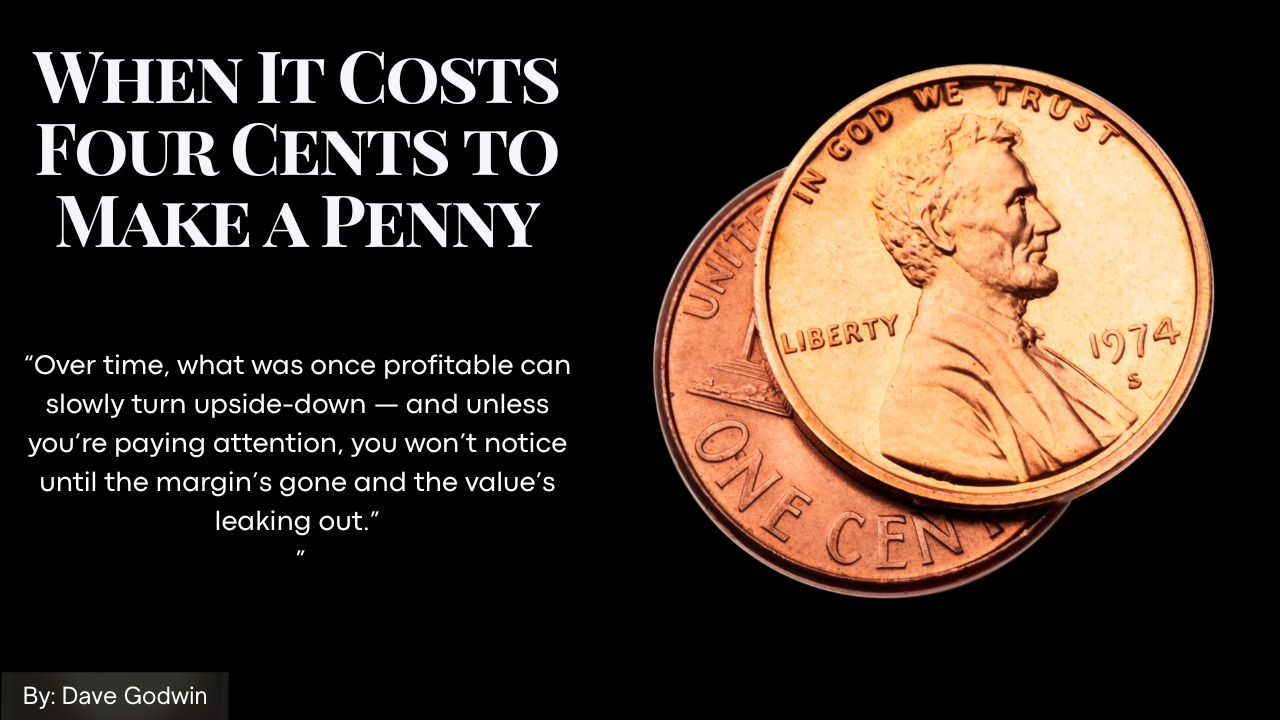Well folks, today marked the end of an era.
The United States just minted its last penny — that little copper-colored coin we all grew up with.
And here’s the part that’ll make you scratch your head:
It now costs about 4 cents to make a coin worth 1 cent.
That’s like selling sweet tea for a dollar while spending four dollars to brew it. You don’t have to be an economist to know that dog won’t hunt.
A Simple Illustration… With a Big Message
The penny didn’t disappear because somebody hated pocket change.
It disappeared because its cost structure stopped making sense.
As a business owner, that ought to hit close to home.
Over time, what was once profitable can slowly turn upside-down — and unless you’re paying attention, you won’t notice until the margin’s gone and the value’s leaking out.
Here’s What This Moment Teaches Us About Business Value
- Costs Move… Even When You’re Not Looking
Just like the mint watched manufacturing costs creep higher, owners often let expenses swell quietly in the background.
Buyers see it immediately — and they price it in.
- Relevance Changes
The penny made sense when a loaf of bread cost a nickel.
But as markets shift, so does the usefulness of old products, old processes, and old habits.
If a buyer sees revenue tied to something losing relevance, they’ll assume more risk… and offer less money.
- Legacy Costs Kill Deals
The government will now save roughly $50–60 million a year by shutting down penny production.
In your world, that’s equivalent to trimming outdated vendors, underperforming product lines, or overhead that’s outlived its purpose.
Every dollar of unnecessary cost is a dollar subtracted from your exit value.
So What Should Owners Do?
- Map your economics clearly. Know exactly what it costs to earn each dollar.
- Identify your “pennies.” Where are you spending more than the value created?
- Remove or restructure legacy costs. Buyers reward efficiency and penalize dead weight.
- Tell the story proactively. If you’ve corrected old inefficiencies, highlight it — it builds buyer confidence.
The Bottom Line
The penny wasn’t a bad idea — it just outlived its math.
A lot of businesses I see look the same way.
The core is solid, the history is strong, but a few outdated costs or processes are quietly dragging down what could be a premium sale.
Fix the pennies, and the dollars take care of themselves.
As a seasoned entrepreneur and Certified Business Intermediary, I help business owners prepare, position, and exit their companies at maximum value—with clarity and confidence, backed by real-world ownership and advisory experience.
If you’d like to know what your company is worth today—and whether now might be the right time to go to market—Click here to schedule a time for us to chat.



